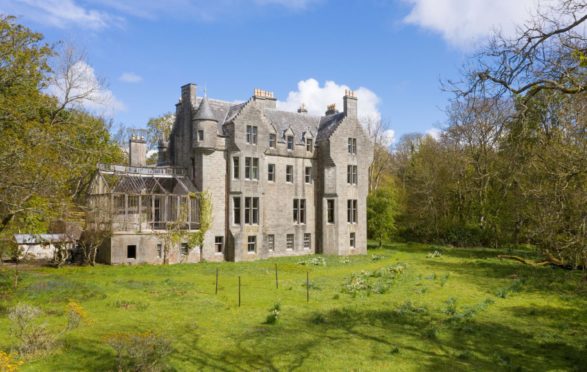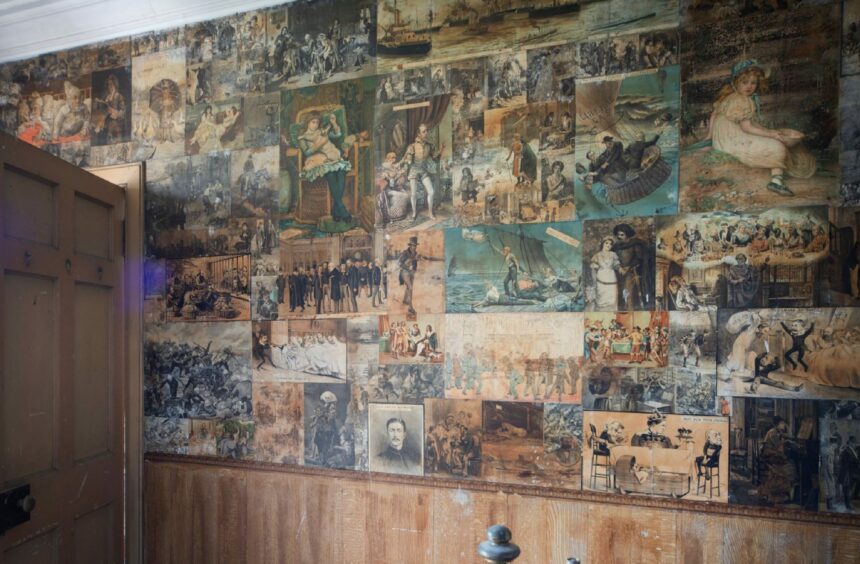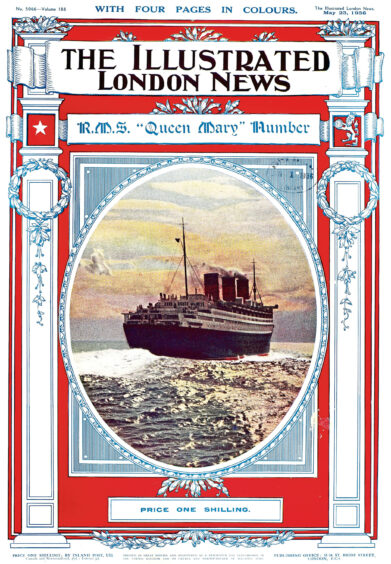
It’s the ultimate self- isolation DIY project – and almost 150 years old.
A castle on the market in Argyll still bears an unusual interior decoration makeover which resulted from a young man’s medical quarantine.
In 1885 Archie Campbell was forced to spend months in his bedroom at Kilberry Castle, in South Knapdale, after contracting scarlet fever and, to keep the youngster entertained, his nurse cut pages from the Illustrated London News and papered the bedroom walls.
The room is one of 10 main bedrooms in the castle, which boasts five receptions rooms and is approached via a tree-lined drive, with a secluded sandy beach within walking distance.
Now, after being in the same family for over 450 years, Kilberry is on the market for offers over £650,000 and the unusual room with many views is still intact and enjoys views across to Islay, Jura, Gigha and the Mull of Kintyre.
The four-storey tower house is said to be in need of extensive refurbishment, although new owners may well wish to preserve Archie’s bedroom decorations.
History has left its mark on the castle, some parts of which date back to the 15th Century. The Earls of Argyll owned it until the Campbells of Kilberry took over the management of the land in 1550.
Captain Proby, an English pirate, attacked and burned the castle in 1513, and during the civil war of 1643-45 the building was besieged by a royalist contingent from the islands.
The castle burnt down in 1773 and lay semi- derelict until 1843 when John Campbell 9th of Kilberry restored the ruins and added the tower and northern extension. The last total renovation was in 1873 by John Campbell 10th of Kilberry using his wife’s dowry.
Paul Nicoll, of The Estates Office, in Oban, which is handling the sale along with Knight Frank, said: “It’s such a rare thing, it’s untouched, nobody has tried to change it, so someone coming in can put their own stamp on it.”

Enjoy the convenience of having The Sunday Post delivered as a digital ePaper straight to your smartphone, tablet or computer.
Subscribe for only £5.49 a month and enjoy all the benefits of the printed paper as a digital replica.
Subscribe
 © Granger/Shutterstock
© Granger/Shutterstock